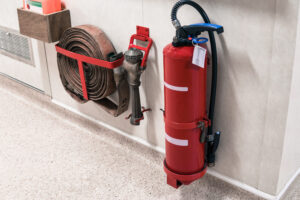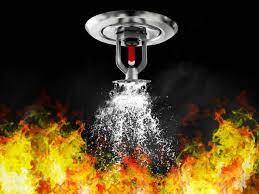Fire safety in schools holds significant importance because the lives of students, teachers, and staff are affected directly by it, and whenever it occurs, this not only causes real damage in terms of physical injury and property loss, but it could also lead to long-term trauma for the whole family for years. The potential for fire occurrence in schools has been regarded as a serious concern by safety authorities; teachers and administration must take this risk with earnestness. Robust measures for fire safety are mandated in many regions. The disruption to learning environments and property damage must also be considered when discussing consequences.
Adequate preparation may result in changes to safety guidelines that have been proposed. Duty of care is required. Fire safety measures include alarms, evacuation protocols, and regular drills that should be practiced properly by all members of the school community. Reports indicate institutions had poor fire safety records, which have been documented in several case studies. The well-being of students and staff is maintained best when educational institutions adopt all recommended fire safety strategies, some of which include:
- Fire safety in schools is crucial for the protection of students, staff, and the school building.
- Common fire hazards in schools include faulty electrical wiring, flammable materials, and blocked fire exits.
- School staff should be trained in fire safety protocols and evacuation procedures to ensure a quick and orderly response in case of a fire.
- Fire drills and evacuation procedures should be practiced regularly to familiarize students and staff with emergency protocols.
- Fire safety education should be integrated into the school curriculum, and fire safety equipment should be regularly maintained to ensure effectiveness in case of a fire.
When this happens, the right to a protected and suitable learning space for every stakeholder is shown plainly, and the assurance provided by these measures contributes significantly to the daily.
Key Takeaways
Protection of students, teachers, and school buildings from fire is important in the school environment, and regular attention by faculty and administration is necessary. Faulty electrical wiring is often found as a source of danger in school facilities, flammable substances may be stored incorrectly, and blocked exits are commonly observed in audit reports, while they use equipment such as lights in improper function.
School personnel get trained for fire safety procedures and evacuation steps to ensure that an orderly response can happen if fire appears. It is important that students and staff practice fire drills and follow evacuation routines frequently in order to get familiarized with emergency rules and avoid confusion during real fire situations at their institutions. Fire safety modules and other types of fire prevention devices should be inspected by maintenance workers for remaining reliable in case of emergencies.
Which Types of Fire Protection Are Available for Schools?


Necessary safety measures are required in school buildings to protect both staff and students from possible harm, and a variety of risks can occur in these environments, so building managers should think carefully about the systems they put in place. Alarms, extinguishers, suppression systems, and so on—all of these have a function in fire protection, but sprinklers, which will only function correctly in emergency situations, can greatly assist in stopping fires from spreading and limiting damage to property. When students and staff receive fast warnings from alarms, they have enough time for safe evacuation. Early notice saves lives. There are many locations where extinguishers can be placed to significantly boost the probability that a small event will not become a major issue.
Suppression systems are often implemented in environments with elevated hazards, such as kitchens and stores, and are also necessary. For food preparation in cafeterias on a large scale, the necessity for commercial hood systems has been recognized. Specialized products and chemicals, where these methods are tailored to neutralize probable threats, are important. Furthermore, extra protection is provided through the treatment of flammable items like curtains, flags, and posters, with fireproofing sprays being administered. In many cases, fires can be completely prevented, which creates another protective measure.
Fireproofing treatments will either delay or avoid the ignition process, thus limiting fire spread and improving safety—the applications have increased in shared spaces like schools. Regular drills are emphasized as well as reinforcing awareness of safety hazards and having instructors who know the exact locations of extinguishers, as well as evacuation paths; if these procedures are followed, response speed improves greatly. Calmness and adherence to instructions among students, facilitated by clear communication, has a significant impact on safety; not all students will react instantly, but repeated drills improve familiarity with safety guidelines.
Extinguishers help contain small incidents before they escalate. Placing them at key locations throughout a building increases the chances of stopping a problem before it grows.
Suppression systems are essential in high-risk areas such as kitchens and laboratories. Cafeterias preparing food in large quantities may require commercial hood systems, while science labs handling hazardous chemicals benefit from specialized suppression methods designed to neutralize potential threats.
Furthermore, by treating flammable materials like curtains, flags, and posters, fireproofing sprays offer additional protection. By reducing combustibility, these treatments help slow or prevent ignition, adding another layer of safety.
